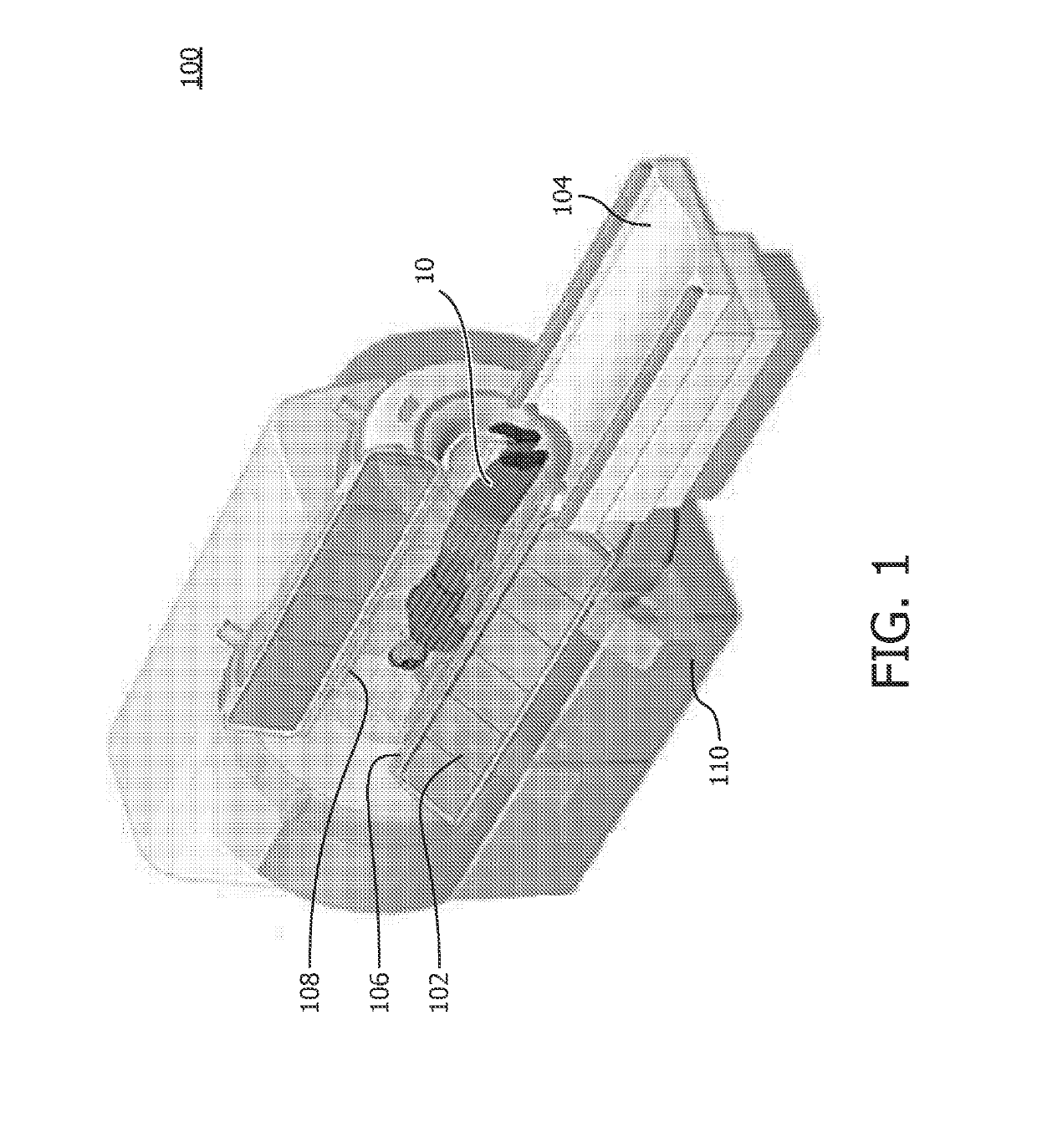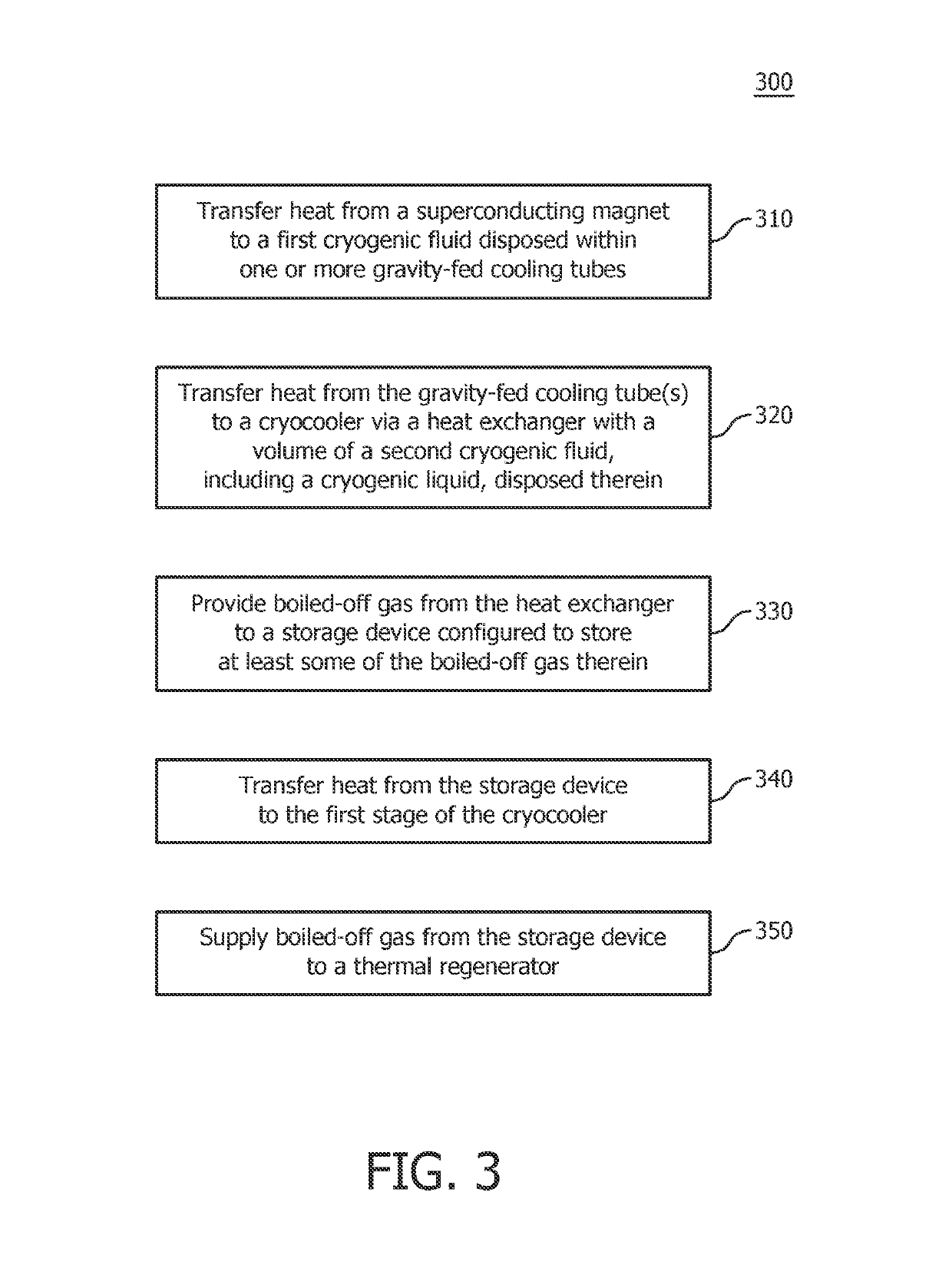Superconducting magnet system including thermally efficient ride-through system and method of cooling superconducting magnet system
a superconducting magnet and ride-through technology, which is applied in the direction of superconducting magnets/coils, magnetic bodies, domestic cooling apparatus, etc., can solve the problems of loss of cryocooler power, cryocooler malfunction, and loss of cryogenic fluid,
- Summary
- Abstract
- Description
- Claims
- Application Information
AI Technical Summary
Benefits of technology
Problems solved by technology
Method used
Image
Examples
Embodiment Construction
[0036]The present invention will now be described more fully hereinafter with reference to the accompanying drawings, in which embodiments of the present invention are shown. The present invention may, however, be embodied in different forms and should not be construed as limited to the embodiments set forth herein. Rather, these embodiments are provided as teaching examples of the invention. Within the present disclosure and claims, when something is said to have approximately a certain value, then it means that it is within 10% of that value, and when something is said to have about a certain value, then it means that it is within 25% of that value. When something is said to be substantially greater, then it means that it is at least 10% greater, and when something is said to be substantially less, then it means that it is at least 10% less.
[0037]FIG. 1 illustrates an exemplary embodiment of a magnetic resonance imaging (MRI) apparatus 100. MRI apparatus 100 may include a magnet 1...
PUM
| Property | Measurement | Unit |
|---|---|---|
| volume | aaaaa | aaaaa |
| volume | aaaaa | aaaaa |
| superconducting | aaaaa | aaaaa |
Abstract
Description
Claims
Application Information
 Login to View More
Login to View More - R&D
- Intellectual Property
- Life Sciences
- Materials
- Tech Scout
- Unparalleled Data Quality
- Higher Quality Content
- 60% Fewer Hallucinations
Browse by: Latest US Patents, China's latest patents, Technical Efficacy Thesaurus, Application Domain, Technology Topic, Popular Technical Reports.
© 2025 PatSnap. All rights reserved.Legal|Privacy policy|Modern Slavery Act Transparency Statement|Sitemap|About US| Contact US: help@patsnap.com



